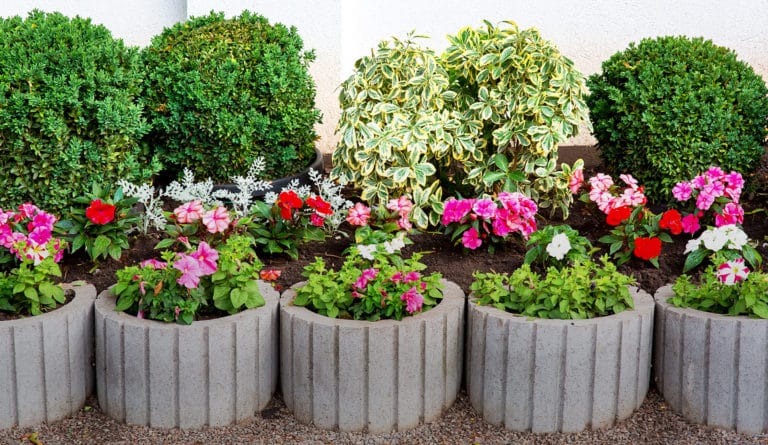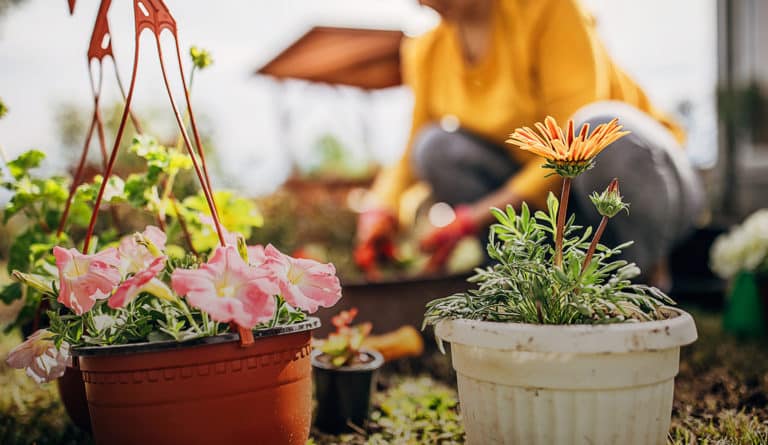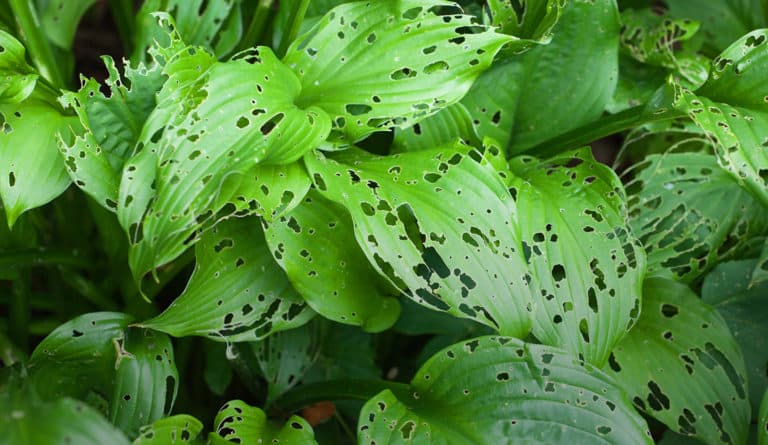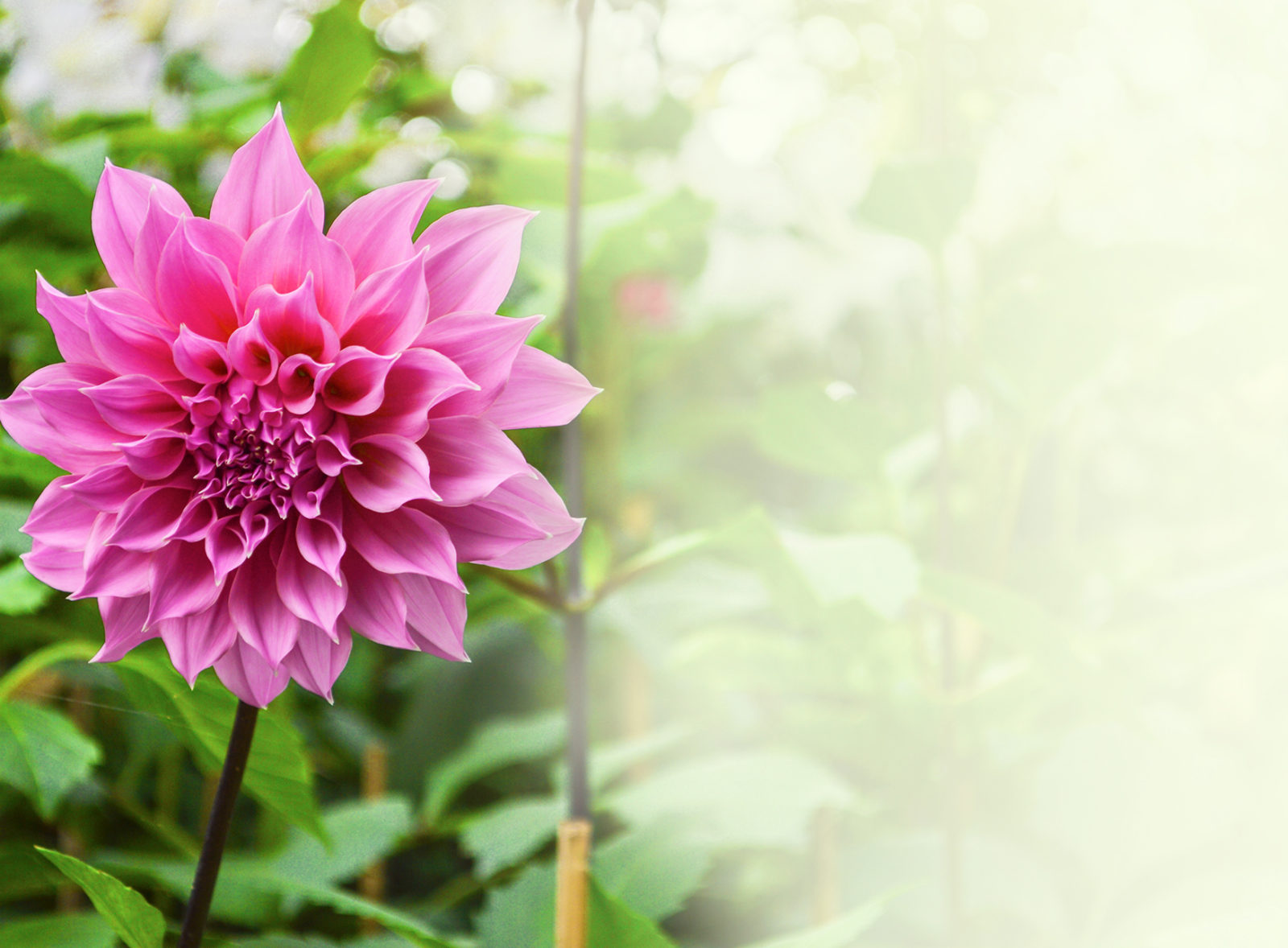
dahlias
aka Dahlia Flower
How can one flower be packed with so many petals!? Dahlias are geometry and pure beauty together as one. And with over 20,000 hybrid variations, there’s always something new and exciting for your garden.
variations
There are over 42 types of dahlias and innumerable hybrids.
light
full sun
Dahlias like to be sheltered from winds, but they positively love the sun. Find a spot with as much sun as possible. South and west facing locations are best.
water + feeding
not too thirsty
Young Dahlias don’t need much water and overwatering can even cause rot. When Dahlias are grown up, you only need to water if they get less than inch in seven days. Potted plants need more regular watering. Dahlias like regular feedings. To supercharge those incredible blossoms, pick a fertilizer that emphasizes Phosphorous over Nitrogen, like Miracle-Gro® Water Soluble Bloom Booster plant food. Too much nitrogen will overly promote greenery growth and reduce the number of flowers.
toxic
yes!
Toxic to pets if ingested. For humans, Dahlia roots have a phytotoxic (toxic when exposed to light) substance that can irritate the skin.
size
mostly medium
Most Dahlia varieties grow as bushy plants that reach 3 to 4 feet. Border Dahlias varieties are bred for neat rows and get far less busy.
pro tip
top heavy
Most Dahlias grow such big blooms that they topple under the weight of their own beauty. There’s a lesson in there somewhere. And that lesson is to use sturdy stakes! Pre-place them wherever you plan to plant a Dahlia. If you’re adding a stake after planting, be careful not to lance that tuber. You can also use Tomato cages instead of stakes.
fun fact
annuals vs perennials
Dahlias are annuals in Canada, but perennials in warmer climates. If you truly love a certain Dahlia (it happens) you can gently dig up the tuber after the first hard frost, and replant next year. This is advanced gardening and takes serious planning and commitment.
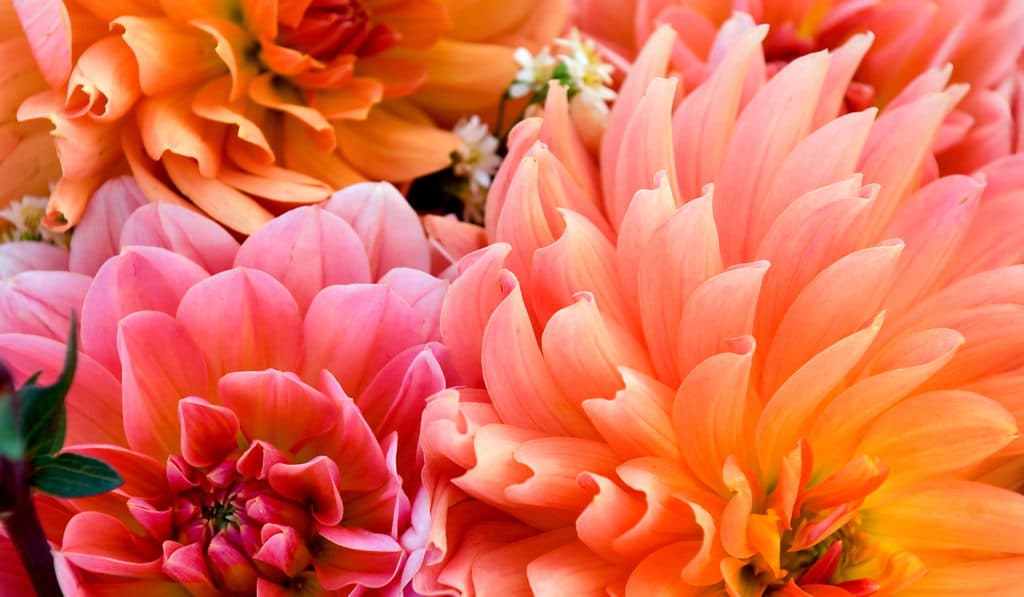
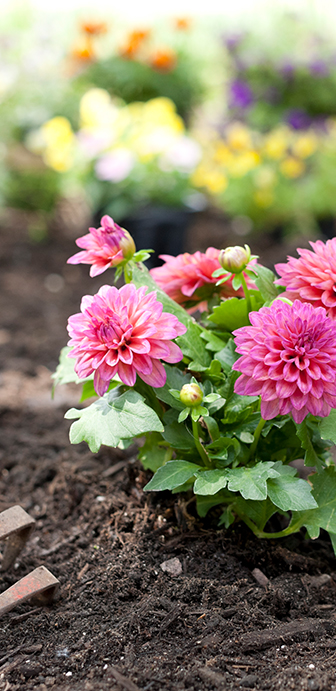
beyond the basics
-
soil & potting
Dahlias like nutrient-rich, moist soil that has good drainage like Miracle-Gro® Potting Soil. They sprout from bulb-like “tubers” which sprout multiple shoots. You can start pre-growing them indoors in pots or wait until late Spring and plant directly outdoors. Those cold-sensitive Dahlia tubers need the soil to be warm. Pro tip: Wait until the neighbourhood Lilac bushes are in full bloom.
When you buy tubers, they can come in clusters or individuals. You can separate clusters if you like. Make sure the soil is rich and moist, but not wet. Plant your tubers individually if you want strategic single pops or arranged rows of Dahlias. Or plant clusters if you want bushy groups of flowers.
Put supportive stakes firmly in the ground wherever you’re planting Dahlias. This will prevent you from staking later (when you can harm the plant) and it will also act as a marker while the Dahlia is sprouting underground.
Small tubers (around 2 inches long) should be planted 3 inches deep and larger tubers go 6 or 7 inches deep. For single tubers, make sure to point the “eye” upwards. Space your tubers 3 to 4 feet. If you’re planting in containers, go big! At least 12 inches deep and wide, and it helps to mix some peat moss into the soil to help keep it moist. In garden beds or planters, water once at planting, but don’t water again until you see signs of sprouting above the soil. Expect 4 to 5 weeks.
-
companion planting
Support your Dahlias with companion plants that naturally repel pests. You can ward off slugs by paring with Creeping Comfrey. Coriander and Anise will repel aphids. As bonus, Anise attracts predatory wasps that feed on plant-sucking insects. Other plant helpers are Mint, Rosemary and Thyme.
-
blooms
Dahlias will generally begin blooming 8 weeks after planting. Talk about “late bloomers” they usually get going in mid-July. Their hypnotically beautiful flowers range in size, from 2-inch lollipops to enormous 15 inch “dinner plate” blooms! Most varieties grow quite tall, 4 to 5 feet.
-
pest control
Small Dahlia plants can fall victim to slugs. Check them in the morning. Remove any slugs by hand and if this looks like an ongoing problem, go for slug control options like Ortho® Slug B Gon® Slug and Snail Bait.
Bugs like Japanese beetles can go after your blooms just as they’re reaching peak beauty. These shiny green little jerks don’t bite, so you can pick them off and toss them in soapy water to kill them. Or you can spray them with a gentle pesticide like Ortho® Beetle B Gon Max™ Beetle Killer.
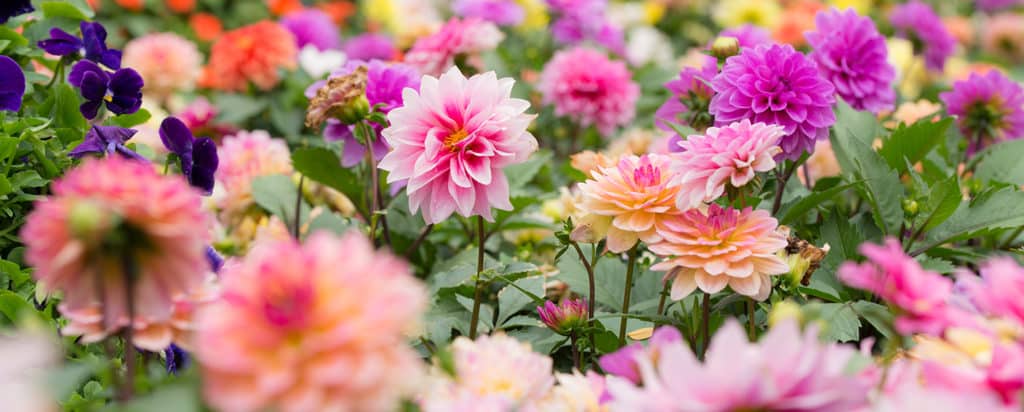
troubleshooting
-
why the soft, rotting flowers?
Could be a Fungus called Fusarium. It’s common in soil. This fungus can infect tubers and causes stems to break down. Cut away the affected part of the stem without killing the whole plant, if you can. Prevention is the best cure for this fungus. Plant in soil with good drainage and plant in the full sunspots that Dahlias naturally crave.
-
why are my blooms tattered?
Probably Thrips, tiny bugs that look like mini grains of rice. They burrow into flower buds and eat the juicy petals from the inside. Often you don’t know until the flower opens up and you see the tattered bloom. Sometimes the buds won’t even open. Get those Thrips with a gentle pesticide like Ortho® Bug B Gon®ECO Insecticidal Soap.
-
what is this yucky grey mold?
Probably Powdery mildew. This is easy an easy fix. Prune affected areas and clear out any damp debris around your plant. Ensure air can flow around your Dahlia to prevent recurring problems.
-
why do a have yellowing leaves?
Might be a virus like Dahlia Mosaic Virus. These are spread by insect pests like Aphids and Leafhoppers. There’s no way to treat plant viruses. If you see Aphids (clusters of tiny yellowish-green bugs under the leaves) treat with a gentle pesticide like Ortho® Bug B Gon®ECO Insecticidal Soap. Sadly, you’ll need to remove the plant to prevent spreading to others.
-
why is my Dahlia Rotting?
Probably too cold and wet. Dahlias need warm, well-draining soil. See planting instructions. Wait until the Lilacs are in full bloom to plant. When planting tubers, water them once and resist watering until you see the first shoots above the soil.

